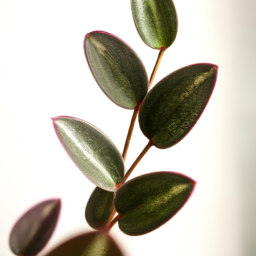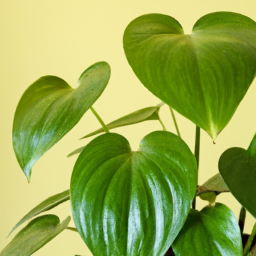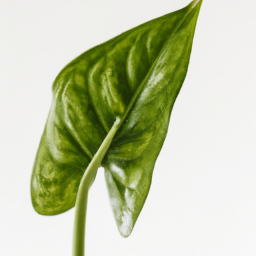
Are you looking to add some greenery to your home but not sure where to start? There are so many different types of house plants to choose from, each with their own unique characteristics and care requirements. Whether you’re a seasoned plant parent or just starting out, it’s important to know the different options available to find the perfect fit for your space. In this blog post, we’ll explore some of the most popular types of house plants, from low-maintenance succulents to vibrant tropicals. So grab your watering can and let’s dive into the wonderful world of indoor gardening!
Different Types of House Plants: A Comprehensive Guide
House plants are a great way to bring nature indoors and add a touch of greenery to your living space. With so many different types of house plants to choose from, it can be overwhelming to know where to start. In this guide, we will explore the various types of house plants available, their care requirements, and some tips for choosing the right plants for your home.
Types of House Plants
When it comes to house plants, there are countless varieties to choose from. Some popular types of house plants include:
1. **Succulents**: Succulents are a great choice for beginners as they are low-maintenance and come in a wide range of shapes and sizes. They store water in their leaves, making them drought-tolerant and perfect for forgetful plant owners.
2. **Ferns**: Ferns are a classic choice for indoor plants, known for their delicate, feathery fronds. They thrive in humid environments and can add a touch of elegance to any room.
3. **Spider Plants**: Spider plants are known for their long, thin leaves and small white flowers. They are easy to care for and can help purify the air in your home.
4. **Pothos**: Pothos plants are popular for their trailing vines and heart-shaped leaves. They are incredibly resilient and can thrive in low light conditions.
5. **Peace Lilies**: Peace lilies are known for their dark green leaves and white flowers. They are great for adding a pop of color to your home and are relatively low-maintenance.
6. **Snake Plants**: Snake plants, also known as mother-in-law’s tongue, are known for their tall, upright leaves. They are incredibly resilient and can survive in low light and drought conditions.
7. **Rubber Plants**: Rubber plants have large, glossy leaves that can add a tropical touch to your home. They are easy to care for and can thrive in a variety of light conditions.
Caring for House Plants
Taking care of house plants is essential to ensure they thrive and stay healthy. Here are some general care tips for house plants:
1. **Light**: Different types of house plants have varying light requirements. Some plants thrive in bright, indirect light, while others prefer low light conditions. Make sure to research the specific light needs of your plants and place them accordingly.
2. **Watering**: Overwatering is one of the most common mistakes people make when caring for house plants. Make sure to water your plants only when the top inch of soil is dry to the touch. It’s better to underwater than overwater, as most house plants are more tolerant of dry conditions.
3. **Humidity**: Some house plants, like ferns and orchids, thrive in humid environments. You can increase humidity levels by misting your plants regularly or placing a humidifier nearby.
4. **Fertilizing**: House plants need nutrients to thrive, so it’s essential to fertilize them regularly. Use a balanced, water-soluble fertilizer and follow the instructions on the label.
5. **Repotting**: As house plants grow, they may outgrow their pots. Repot your plants every 1-2 years to give them room to grow and refresh the soil.
Choosing the Right House Plants
When choosing house plants for your home, consider the following factors:
1. **Light Conditions**: Take note of the natural light in your home and choose plants that will thrive in those conditions. If you have low light areas, opt for plants that are tolerant of low light, such as snake plants or pothos.
2. **Space**: Consider the size of your space when choosing house plants. If you have limited space, opt for smaller plants or plants that can be placed on shelves or hanging baskets.
3. **Care Requirements**: Be honest with yourself about your ability to care for house plants. If you have a busy schedule, opt for low-maintenance plants like succulents or snake plants.
By following these tips and exploring the different types of house plants available, you can create a green oasis in your home that brings joy and tranquility. Happy planting!

Popular Varieties of Indoor Plants for Your Home
Welcome to our guide on popular varieties of indoor plants for your home! House plants are a great way to add some greenery and life to your living space. Whether you’re a seasoned plant parent or just starting out, there are plenty of options to choose from. In this article, we’ll explore some of the most popular types of house plants and provide tips on how to care for them.
Succulents
Succulents are a popular choice for indoor plants due to their unique shapes and low maintenance requirements. These plants store water in their leaves, allowing them to thrive in dry conditions. Some popular varieties of succulents include aloe vera, jade plant, and echeveria. Succulents come in a wide range of colors and sizes, making them a versatile option for any home.
When caring for succulents, it’s important to provide them with plenty of sunlight and well-draining soil. Water them sparingly, allowing the soil to dry out between waterings. Avoid overwatering, as this can lead to root rot. With the right care, succulents can thrive indoors for years to come.
In addition to their low maintenance requirements, succulents are also known for their air-purifying properties. These plants can help improve indoor air quality by removing toxins and adding oxygen to the environment. Consider adding a few succulents to your home to enjoy their beauty and health benefits.
Spider Plants
Spider plants are another popular choice for indoor plants, thanks to their long, arching leaves and easy care. These plants are known for their air-purifying abilities and can help remove toxins such as formaldehyde and carbon monoxide from the air. Spider plants are also safe for pets, making them a great option for pet owners.
When caring for spider plants, provide them with bright, indirect light and well-draining soil. Water them regularly, allowing the soil to dry out slightly between waterings. Spider plants are fast growers and can produce “babies” or offshoots that can be propagated into new plants. With proper care, spider plants can thrive indoors and brighten up any space.
Consider hanging a spider plant in a macramé hanger or placing it on a high shelf to showcase its cascading leaves. Spider plants are easy to care for and can add a touch of greenery to any room in your home.
Pothos
Pothos, also known as devil’s ivy, is a popular choice for indoor plants due to its trailing vines and low maintenance requirements. These plants are tolerant of low light conditions and can thrive in a variety of environments. Pothos come in a range of colors, including green, variegated, and golden varieties.
When caring for pothos, provide them with indirect light and well-draining soil. Water them when the top inch of soil feels dry, and avoid overwatering to prevent root rot. Pothos can be grown in hanging baskets, on trellises, or as trailing plants on shelves or mantels.
In addition to their beauty, pothos are known for their air-purifying properties and can help remove toxins such as formaldehyde and benzene from the air. Consider adding a pothos plant to your home to enjoy its cascading vines and health benefits.

Exploring the Diversity of House Plants: From Succulents to Ferns
The World of Succulents
Succulents are a popular choice for house plants due to their unique appearance and low maintenance requirements. These plants store water in their leaves, stems, or roots, allowing them to thrive in arid conditions. Some popular types of succulents include aloe vera, jade plant, and echeveria.
Aloe vera is known for its healing properties and is commonly used in skincare products. This succulent has thick, fleshy leaves that contain a gel-like substance that can soothe sunburns and other skin irritations. Jade plants, on the other hand, are known for their tree-like appearance and are often referred to as “money plants” because they are believed to bring good luck and prosperity.
Echeveria is a type of succulent that comes in a variety of colors and shapes, making it a popular choice for succulent enthusiasts. These plants are easy to care for and can thrive in a variety of environments, making them a great addition to any indoor garden.
Succulents come in a wide range of shapes, sizes, and colors, making them a versatile choice for house plants. Whether you prefer the classic look of aloe vera or the unique appearance of echeveria, there is sure to be a succulent that fits your style and personality.
The Beauty of Ferns
Ferns are another popular choice for house plants due to their lush, green foliage and elegant appearance. These plants are known for their feathery leaves and can add a touch of nature to any indoor space. Some popular types of ferns include Boston fern, maidenhair fern, and bird’s nest fern.
Boston ferns are one of the most common types of ferns and are known for their arching fronds and vibrant green color. These plants thrive in humid environments and are often used as hanging plants or as part of a lush indoor garden. Maidenhair ferns, on the other hand, are known for their delicate, lacy leaves and are often used in terrariums or as accent plants in floral arrangements.
Bird’s nest ferns are unique in that they have a rosette-like growth habit, with leaves that radiate out from the center like a bird’s nest. These ferns are easy to care for and can thrive in low light conditions, making them a great choice for beginners or those with limited sunlight in their homes.
Ferns are a great way to add a touch of greenery to your indoor space and can help purify the air in your home. Whether you prefer the classic look of a Boston fern or the delicate beauty of a maidenhair fern, there is sure to be a fern that fits your style and preferences.
Caring for Your House Plants
When it comes to caring for your house plants, there are a few key things to keep in mind to ensure they thrive and stay healthy. First, make sure to place your plants in a location that receives the right amount of sunlight for their specific needs. Some plants, like succulents, prefer bright, indirect light, while others, like ferns, thrive in low light conditions.
Next, be sure to water your plants regularly, but be careful not to overwater them. Most house plants prefer to dry out slightly between waterings, so be sure to check the soil moisture before watering. Additionally, be sure to provide your plants with the right type of soil and fertilizer to help them grow and thrive.
Finally, be on the lookout for any signs of pests or disease, and take action to address any issues as soon as possible. By following these simple care tips, you can enjoy beautiful, healthy house plants that will brighten up your indoor space for years to come.
Let’s wrap up what we learned
House plants are a great way to bring life and greenery into your home, but with so many different types to choose from, it can be overwhelming to know where to start. One popular type of house plant is the succulent, known for its ability to store water in its leaves, making it a low-maintenance option for those with busy schedules. Another common house plant is the spider plant, which is known for its air-purifying qualities and easy propagation.
If you’re looking to add a pop of color to your home, consider adding a flowering house plant like the African violet or the orchid. These plants not only brighten up a room with their vibrant blooms, but they also require specific care to ensure they continue to thrive. For those looking to add a touch of tropical vibes to their space, consider a palm plant or a peace lily, both of which thrive in humid environments and can help create a relaxing atmosphere in your home. With so many different types of house plants to choose from, there’s sure to be one that fits your style and care routine.
Your Questions Answered. Comprehensive FAQ:
Q1: What are some common types of house plants?
A1: Some common types of house plants include pothos, spider plants, snake plants, peace lilies, and succulents. These plants are popular choices for indoor spaces due to their low maintenance requirements and air-purifying properties.
Q2: What are some unique types of house plants?
A2: Some unique types of house plants include fiddle leaf figs, monstera deliciosas, air plants, and string of pearls. These plants are known for their interesting shapes, textures, and colors, making them popular choices for adding a touch of personality to indoor spaces.
Q3: What are some low-light house plants?
A3: Some low-light house plants include peace lilies, snake plants, pothos, and ZZ plants. These plants can thrive in environments with minimal natural light, making them ideal choices for rooms with limited sunlight.
Q4: What are some flowering house plants?
A4: Some flowering house plants include orchids, African violets, peace lilies, and begonias. These plants produce beautiful blooms in a variety of colors, adding a pop of color and fragrance to indoor spaces.
Q5: What are some easy-to-care-for house plants?
A5: Some easy-to-care-for house plants include spider plants, pothos, snake plants, and succulents. These plants require minimal watering and maintenance, making them perfect choices for beginners or those with busy schedules.
Dr. Olivia Green is a botanist with over two decades of experience in indoor plant cultivation. She holds a Ph.D. in Plant Biology and has dedicated her career to researching plant behavior in controlled environments. Dr. Green is passionate about helping plant enthusiasts master the art of indoor gardening through her extensive knowledge and practical insights.


